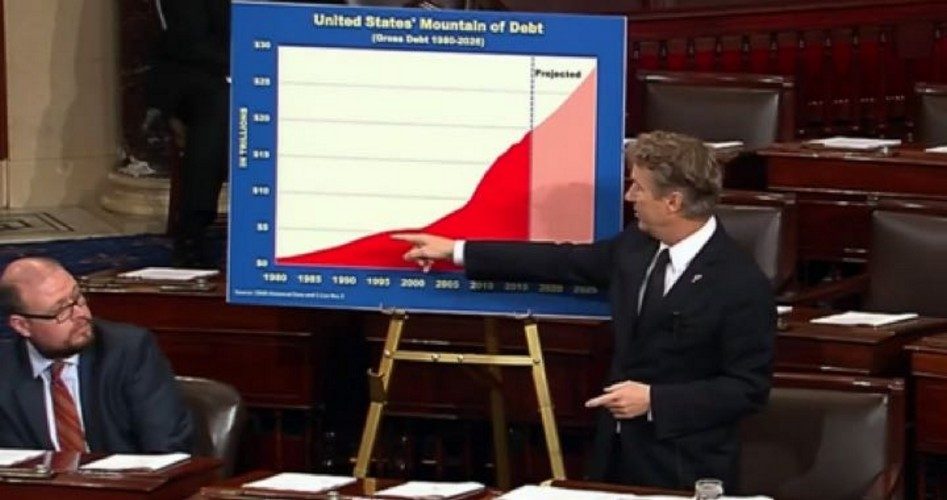
By a vote of 21 to 76, the Senate on May 17 voted to reject legislation introduced by Rand Paul (R-Ky.), shown on right, that would have balanced the budget in five years and cut spending by roughly $13 trillion over 10 years.
“Republicans say they are for balancing a budget so today’s a litmus test. If your senator has been saying they’re for a balanced budget, they ought to vote for it,” Paul said on Fox News before the vote.
“When the Republican Party is out of power, they are a conservative party,” Paul said just before the vote. “The problem is that when the Republican Party is in power, there is no conservative party.”
Only 20 Republicans joined Paul in voting for his proposal, known as the “penny plan.” Twenty-nine Republicans joined 47 Democrats in rejecting the measure.
The blatantly interventionist Lindsey Graham (R-S.C.) argued that Paul’s plan would threaten the military just months after Congress succeeded in passing a significant increase in military spending that many Republicans regarded as crucial. “This budget throws our military in a ditch, and I am tired of doing that,” Graham said. “It is a joke. Now is not the time to be funny. Now is the time to be serious.”
“If you’re a defense hawk, you should be against this approach, because it creates the one thing we can’t afford, which is unpredictability,” Graham said.
A writer for Reason magazine disputed Graham’s assertion, noting:
Even if the entire $400 billion cut Paul proposed were applied to the Pentagon, America would still spend far more on the military than any other nation…. As Paul pointed out on [May 17], the national debt and $1 trillion deficits are bigger threats to America’s long-term national security than a reduction in funding for the Pentagon.
Paul’s office issued a press release on May 17 explaining that his plan would have balanced the budget within five years, without touching Social Security, by restoring spending to pre-Bipartisan Budget Act of 2018 levels and utilizing the “Penny Plan.” The plan simply states that for every on-budget dollar the federal government spent in FY18, excluding the BBA, it spend one penny less for the next five years (at which point balance is reached), with spending then growing at one percent thereafter.
The plan would have reduced spending by $404.8 billion in FY19 and by $13.35 trillion over 10 years relative to the present baseline.
Image: Screenshot from senate.gov



